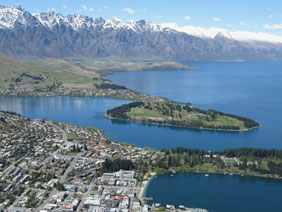Canon PowerShot G9
-
-
Written by Gordon Laing
Canon PowerShot G9 vs Canon EOS 400D / Rebel XTi
Canon PowerShot G9: JPEG versus RAW
One of the PowerShot G9’s new features is the ability to record in the RAW format. It can record RAW files alone, or accompanied by a Large Fine JPEG. We photographed the scene above in the RAW only mode, then once again in the G9’s best quality Superfine JPEG mode for comparison here. The Superfine JPEG measured 5.93MB and the RAW file weighed-in at 14.1MB. At the time of writing, Adobe Camera RAW didn’t officially support the G9. Version 4.2 could actually open the G9’s RAW files, but the results weren’t pretty. So for the comparison below we used Canon’s supplied RAW Image Task utility which runs from the Zoom Browser EX application. We converted the RAW file using the RAW Image Task Utility and its default settings, saving it as a 16-bit TIFF. We then opened this in Photoshop CS3, reduced it to 8-bits, before cropping and saving using the same settings as the original JPEG for presentation here. Judging from the crops below, even the dedicated pixel-peepers amongst us will have a hard time spotting any differences between an in-camera JPEG and a RAW file developed using the default settings. While that may seem like a disappointment, the great benefit of shooting in RAW is having greater latitude to adjust your images afterwards, including the ability to apply more sophisticated noise reduction to the original image data as oppose to a pre-compressed JPEG. So while the default settings didn’t make much difference to our sample shot here, shooting in RAW still gives you far greater flexibility in the long run. Now let’s look at the G9’s resolution. |
Canon PowerShot G9 JPEG |
Canon PowerShot G9 RAW | |
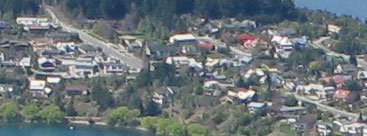 | 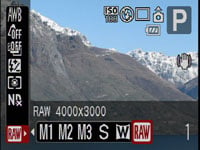 | |
f4, 80 ISO |
f4, 80 ISO |
Canon PowerShot G9 results continued…
Outdoor resolution / Studio resolution / Real life Noise
outdoor scene |
To compare real-life performance we shot the same scene with the Canon PowerShot G9 and Canon EOS 400D / XTi within a few moments of each other using their best quality JPEG and lowest ISO settings. The EOS 400D / XTi was fitted with the EF-S 18-55mm kit lens. Each camera was tested at every aperture setting and the best result selected for this page. The EOS 400D / XTi captured a wider 3:2 frame, but the focal length of each camera was adjusted to deliver the same vertical field of view. Since the 400D / XTi crops below are taken from the same 4:3 area as the G9, it’s effectively being treated here as an 8.9 Megapixel 4:3 camera.The image above was taken with the Canon PowerShot G9 at 10mm f4 and with a sensitivity of 80 ISO; the original JPEG measured 5.93MB. The original image used for the EOS 400D / XTi crops was taken at 25mm f8 with a sensitivity of 100 ISO and measured 4.21MB. The apertures selected were the sharpest for each lens. The crops are taken from the upper left, centre and lower right portions of the originals and presented here at 100%. At first glance the G9’s crops viewed at 100% appear sharper than the 400D / XTi samples, but much of this is due to the textured effect of finely grained noise. The 400D / XTi crops at 100 ISO are virtually bereft of noise and therefore look much smoother. That said, the middle crop of the buildings does show a genuine advantage to the G9 – the 400D / XTi crop may have lower noise and a smoother appearance, but there’s no denying the G9 has captured slightly more detail. Examining the first row of crops from the mountain ridge does show the G9’s optics suffering a little in the corners compared to the 400D / XTi, although to be fair, the G9’s crop represents its extreme corner, whereas the 400D / XTi crop is taken slightly in from the edge of its wider frame. Jumping to the third crop taken from the golf course shows a similar effect from the G9, becoming softer in the corners, although this time the 400D / XTi is far from perfect too. Ultimately, while the G9 can become soft in its extreme corners and there’s visible noise even at low ISOs, it is capable of recording an impressive degree of detail. Shooting in RAW also gives you greater latitude for tweaking and applying more sophisticated noise reduction if desired. And speaking of RAW, scroll down to the bottom of this page to see how it compares to a JPEG file generated in-camera. |
Canon PowerShot G9 |
Canon EOS 400D / XTi with EF-S 18-55mm | |
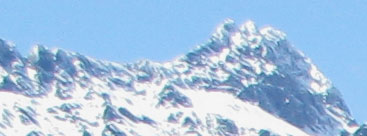 | 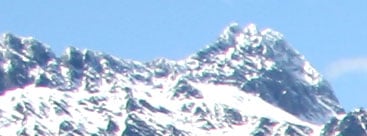 | |
f4, 80 ISO |
f8, 100 ISO | |
 | 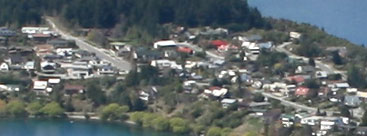 | |
f4, 80 ISO |
f8, 100 ISO | |
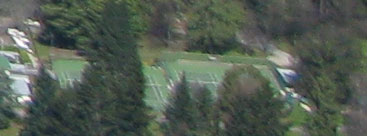 | 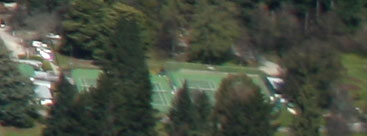 | |
f4, 80 ISO |
f8, 100 ISO |
